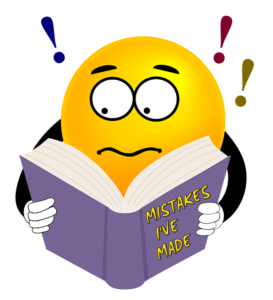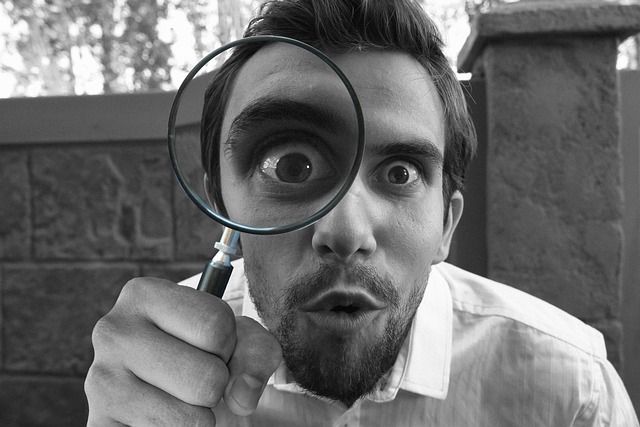Have you ever sent an email or a document to someone and then regretted it because there were mistakes in it? Of course, you have! We’ve all been there. The good news is that proofreading can help prevent those mishaps from happening.
This blog post will discuss the importance of proofreading and why it’s crucial to take the time to check your work. It will also provide some tips on how to proofread effectively. So read on to learn more!
The benefits of proofreading
An important benefit of proofreading is that it will save you time – If you don’t proofread and submit work with mistakes, you might have to re-write or correct what you’ve submitted.
Here are a few more benefits of proofreading your work:
– You can catch grammar, punctuation, and spelling errors that you would have missed.
– It can help you identify areas that need improvement.
– It’s a good way to improve your writing skills.
– Your readers will appreciate the level of detail you put into your work.
– It can make your novel more enjoyable to read.
– You can also make sure your plot points make sense and that the tone of your writing is consistent throughout the book.
Proofreading can be a long process, but it’s worth taking the time to do it right. A well-polished manuscript makes for a better reading experience for your audience and shows that you care about your work.
How to proofread your work effectively
Proofreading your work can seem daunting, but it doesn’t have to be.
Here are some tips to help make the process easier:
• Read aloud – Reading aloud helps slow down your reading pace, allowing you to process and correct mistakes more easily. This will help you catch awkward phrases or words that don’t sound right when you say them. The best way to do that is to print your work and use a different color pen to mark corrections. Make sure to read every word carefully. Sometimes careless mistakes are hiding in plain sight!
• You should also read your text backward – Start by reading the last sentence first, then work your way up to the beginning of the document. This can help catch errors that you may have missed during regular reading.
• Take breaks – If you’re reading a lengthy document, take a break every hour to help clear your mind and remain focused.
• To proofread effectively, you should read through your work twice. The first time, read it for meaning; make sure the words are spelled correctly, and the sentences make sense. The second time, read it for punctuation and grammatical mistakes.
• And finally, always use a spellchecker!
The importance of accuracy

Proofreading is essential for two reasons: accuracy and clarity.
Accuracy is key because readers need to trust that your document is error-free. When there are mistakes, it can be difficult for readers to follow the argument or understand the points you’re trying to make. As a writer, it’s important to do everything you can to ensure that your document is polished and ready for publication.
Clarity is also important because incorrect punctuation, spelling, and typos can obscure your message and lead to confusion. A proofread document will be easier for readers to understand and less likely to raise eyebrows with incorrect information. So before hitting “publish,” take the time to do a final proofread, which can make all the difference between producing an excellent document and falling short.
• Improved accuracy – By proofreading your work, you can ensure that all information is accurate and up-to-date. This is especially important if you are writing a document that will be used for business or other professional purposes.
• More polished work – By proofreading, you can polish your work by eliminating any typos or grammar mistakes. This will help to create a more professional and polished finished product.
• Improved writing style – Taking the time to proofread your work can also help to improve your writing style. By ensuring that all of your punctuation and grammar are correct, you can ensure that your writing flows logically and is free of embarrassing errors.
• Improved credibility – Proofreading ensures that your work has a professional quality, which will help to boost your credibility as a writer. In addition, readers are more likely to trust and respect the information you provide if it is well-written and accurate.
Proofreading tips
Give yourself enough time
Set aside enough time to proofread your work. Don’t leave it to the last minute, as you may not have enough time to thoroughly review your work and make all the necessary corrections. Rushing through it can lead to errors that you might otherwise have caught.
Take breaks between drafts
When proofreading, don’t try to do it all at once. Proofreading is an important step in the writing process, but it’s also time-consuming. That’s why taking a break between drafts is important so you can come back with fresh eyes. Taking a break between drafts will help you catch more mistakes, and you’ll be able to proof your work more effectively.
This break will also give you time to gather your thoughts and make necessary changes before starting the proofreading process again. Proofreading should be done slowly and deliberately to catch all mistakes.
Check your facts
Take the time to double-check the accuracy of any facts and data you’ve used. Ensure that all the information in your writing is accurate and up-to-date. Double-check any statistics or other data to make sure it’s correct.
As you read, take notes on the facts presented in the book and highlight any areas that are disputed or need further clarification. Once you’ve finished reading, review your notes and do additional research on the highlighted topics. Compare your research findings against those presented in the book and make a judgment call on which source is more accurate.
Get a second opinion
If possible, have somebody else read through your work to give it a fresh set of eyes and catch any errors you might have missed. This could be a friend, teacher, or even a professional editor.
Having someone else read your work for mistakes is also a good idea. Sometimes you’re so close to your writing that you can’t see the mistakes. Having another set of eyes look at it can help you catch things you missed.
Check for typos

Typos are small mistakes that can alter the meaning of a sentence or make it sound strange. Look out for double words and words that have been mistyped or misused, and make sure all your text is easy to understand.
All sorts of typos can happen in a novel, from missed words to incorrect spelling. Here are a few examples:
Misspelled words: “The wind howled through the tree’s” instead of “The wind howled through the trees”
Incorrect homonyms: “She had to right the wrong she had committed” instead of “She had to write the wrong she had committed”
Missing words: “He was starting feel better when he got home” instead of “He was starting to feel better when he got home”
Incorrect punctuation: “We went out for ice cream, cake and coffee” instead of “We went out for ice cream, cake, and coffee.”
Check for consistency
Ensure that your writing is consistent throughout. This includes checking that terms are used correctly, formatting is consistent, names are spelled correctly, and sources are correctly cited.
One of the main things to look for when checking a novel for consistency is whether the author has correctly maintained the point of view (POV) throughout the story. Another thing to watch out for is whether all the characters sound like they come from the same region or socioeconomic background.
Here are some things you should check for:
– Make a list of your characters and track their appearances throughout the novel. Are they in every scene? Are they mentioned but not seen? If they’re not seen, why not?
– Check your timeline. Is everything chronological? Are there any inconsistencies about dates or sequence of events?
– Compare different scenes or passages that occur close to each other. Do they match up in terms of tone, setting, and description?
– Look at the language you’ve used to describe objects, settings, and people. Is it consistent throughout the novel?
– Pay attention to your point of view and the narrator’s voice. Does it sound like the same person?
Check for grammar and spelling errors
Check your work for basic grammar and spelling mistakes. If you’re unsure about the correct use of certain words, look them up in a dictionary or use an online spell checker to ensure they are right.
Check for content accuracy
– Ensure that all the facts and figures you’ve used in your work are accurate and up-to-date. This can help ensure that your arguments are convincing and that your claims are well supported.
One of the best ways to check a thriller for accuracy is to look into the backgrounds of the experts consulted during its creation. If you can find out which experts were consulted and then do some research on their own, you can often get a good idea of how accurate the thriller was.
Another way to check for accuracy is by looking at reviews written by experts in the field. If there are any errors that they point out, then you can be sure that they’ll be in the book as well.
Check the formatting

Check that formatting is consistent throughout the document, such as font type and size, indentation, spacing, and margins.
There are a few different ways to check the formatting in a novel for accuracy. One way is to use a word processor such as Microsoft Word or Pages to create a PDF of your novel. Once you have the PDF, you can use the “Print Preview” function to view how your text will look when printed.
Another way to check the formatting is to upload your manuscript as a document on Amazon Kindle Direct Publishing and preview it in the “Look Inside” feature.
Use Beta readers
Beta readers are usually friends or family members willing to read a writer’s work and offer feedback. Some beta readers prefer to give feedback in a written format, while others are happy to provide oral feedback.
Writers should always take the advice of their beta readers with a grain of salt. Not all feedback is useful, and some beta readers may be more critical than they should be. But overall, the input of a good beta reader can help improve a writer’s work.
Proofreading tools and resources
Many tools and resources are available to help you proofread your writing more accurately.
Here are just a few:
• Grammarly – This AI-powered grammar checker will help you identify punctuation, spelling, and grammatical errors. It can also suggest better word choices for clarity and conciseness.
• Hemingway Editor – This editor helps you improve the readability of your writing by flagging long sentences, passive voice, and more.
• Thesaurus and dictionary – These tools are essential for briefly finding the right word or phrase to express yourself.
• Online spell checkers – These tools will help you identify spelling errors.
• Printed copy – This is especially helpful if you’re writing something lengthy and complex, such as a book or thesis. Print out a copy and read it out loud to catch any mistakes that may have slipped through the cracks.
• Professional proofreaders – These professionals are often very skilled at catching errors and helping to improve the readability of your document. Proofreading is an important step in the editing process, and it’s often helpful to enlist the help of a professional proofreader for effective proofreading to ensure that your document is free of errors.
Proofreaders can help correct grammar, punctuation, spelling, and style mistakes. They can also help improve your text’s readability by ensuring that the language is clear and concise.
If you’re looking for a professional proofreader, you can check out the Pro Proofreading Network or Reedsy.professional proofreaders.
Conclusion
The written word is a powerful tool that can help us communicate our thoughts and feelings. Used wisely, it has the ability to move people and change the course of history.
Proofreading your writing is an essential and often underestimated step in the writing process. By taking the time to go through it, you can ensure that your work is accurate and free of any errors or inconsistencies. With these tips, you should be able to proofread your writing quickly and confidently. Good luck!
If you’re working on your first novel and are looking for more help with your writing, please check out my other writing articles at https://ullahakanson.com/blog/
Thanks for reading!
Ulla

